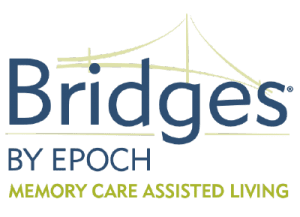 By Dr. Brent P. Forester, MSc., Geriatric Psychiatrist, Bridges by EPOCH at Westford
By Dr. Brent P. Forester, MSc., Geriatric Psychiatrist, Bridges by EPOCH at Westford
Although hard for me to imagine, I was in medical school 25 years ago. Back then, we were taught little about how to assess Alzheimer’s disease (AD), and nothing about how to treat the symptoms of memory loss, behavioral disturbance and functional decline that are the classic hallmarks of this progressive illness.
A quarter of a century later, not only do we now have high tech brain imaging tests that can visualize the amyloid protein and tau tangles in the brain that cause Alzheimer’s disease, but we can prescribe symptomatic therapies that help to slow down the cognitive and functional decline associated with dementia. Although Alzheimer’s has no cure, we do have symptomatic treatments – medications that have been approved by the FDA for the treatment of AD.
What exactly are symptomatic treatments, how do they work, what are the side effects, and why would I want my loved one to take these medications? In 1993, the FDA approved the first treatment for Alzheimer’s. The medication was called tacrine (brand name, Cognex). This became the first of four medications in a class known as the cholinesterase inhibitors (CHEIs) approved to treat the mild to moderate stages of Alzheimer’s.
The other medications subsequently approved include Donepezil (Aricept), rivastigimine (Exelon, comes in both a pill and a skin patch) and galantamine (Razadyne). Although tacrine was the first drug to make it to the marketplace, it was not widely used due to side effects and complexity of administration. This medication, and the three that followed, increases a chemical in the brain called acetylcholine by inhibiting an enzyme that breaks down acetylcholine in the brain. Our brain requires acetylcholine for normal memory and learning. Before talking about side effects and goals of treatment, I will first present an interesting medical “pearl” about medications that impair memory.
Importantly, there are numerous medications taken over the counter and prescribed by doctors that actually prevent acetylcholine from working normally. One example of such an over the counter medication is diphenhydramine, commonly known as Benadryl. Many older adults take Tylenol PM to help with insomnia. The PM part of Tylenol PM is Benadryl, which commonly causes confusion. You may logically conclude that it does not make any sense to take both a cholinergic enhancing medication (tacrine) at the same time as Tylenol PM. In fact, when I see a new patient presenting with memory problems, the first thing to do is to identify and then remove medications that might be making memory worse. There is no point adding a memory enhancing treatment until the other medicines causing cognitive loss are stopped. Now, back to tacrine…
So back in 1993, this new medication comes to market and was rarely prescribed. Why? One of the unfortunate side effects is liver toxicity. Also, the drug is rapidly cleared from the body and must be dosed four times per day to be effective (not practical for someone with memory loss). Further, the benefits of treatment were not obvious to primary care MDs, the clinician most likely to diagnose and treat dementia. In fact, tacrine is as effective as the other three CHEIs in terms of slowing the decline in memory and daily functioning associated with dementia.
However, when Donepezil (Aricept) came out in 1996, there was widespread use of this medication. What was the difference with this medication? Well, for one thing, Aricept is dosed only once per day, has no liver toxicity and is well tolerated if taken with food.
The most common side effects caused by of all the CHEIs are nausea, loose stools and vomiting (especially with the oral version of the next drug to hit the shelves, rivastigmine (Exelon)). Aricept’s ease of use and relative tolerability to this day are responsible for its status as the most commonly used treatment for Alzheimer’s disease. There are some advantages to the skin patch version of Exelon in terms of a significant reduction in gastrointestinal side effects.
Finally, in 2001, Memantine (Namenda), a new medication with a very different mechanism of action, was approved by the FDA. Namenda acts on a receptor in the brain called the NMDA receptor. The medication binds to the receptor and slows down the transmission of the excitatory chemical, glutamate. To put it simply, too much glutamate in the brain can be toxic to brain cells and cause hallucinations and agitation, while too little glutamate can impair memory.
So, Memantine modulates the transmission of glutamate so that its high levels are reduced enough to reduce the toxic effects of glutamate on the brain, but not reduced so much that memory is further impaired. Unlike the CHEIs, Namenda was FDA-approved for moderate to severe dementia and is now commonly used in addition to one of the CHEI medications.
I don’t know about you, but enough neurochemistry and brain receptors for one blog! Next month, I will talk about how these two classes of medications are only tackling the chemical brain changes in Alzheimer’s that result from brain cell death. We will focus on therapies that target the brain lesions that occur “upstream” in this disease process and are the biological hallmarks of the illness: amyloid plaques and neurofibrillary tau tangles.


